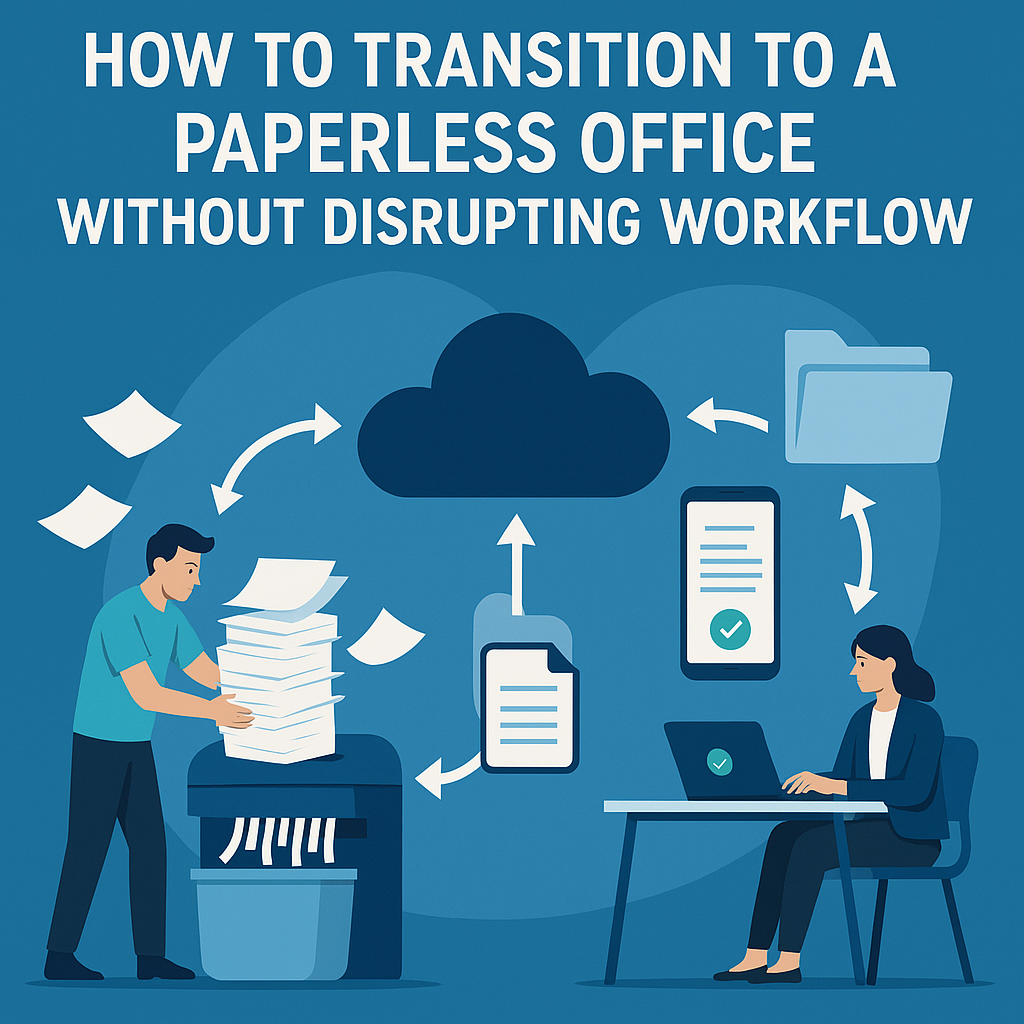
How to Transition to a Paperless Office Without Disrupting Workflow
Introduction: The Benefits of Going Paperless
Imagine a world where stacks of paper cluttering your desk are nothing but a distant memory. That's the promise of a paperless office! Transitioning to a paperless workspace not only boosts productivity but also helps the environment by reducing waste. But how do you move from a paper-dependent office to a streamlined, digital-first environment without missing a beat? In this article, we'll guide you through the steps to make the transition to a paperless office as smooth as possible.
Step 1: Assess Your Current Paper Usage
Before diving into the world of digital tools, take a moment to analyze how much paper you’re actually using. Is it invoices? Reports? Contracts? Identifying the areas where paper is most frequently used is the first step toward making a more informed transition.
Step 2: Choose the Right Digital Tools for Your Needs
Document Scanning Software
To get started, invest in a reliable document scanner. Scanning apps and devices like longevity gadgets will help you quickly convert physical documents into digital files. Don’t forget to choose software that integrates seamlessly with your existing systems.
File Management Systems
You'll need a cloud storage service to store your scanned files. Some popular options include Google Drive, Dropbox, and OneDrive. These tools allow you to access your documents anywhere and anytime.
Step 3: Digitize Your Physical Documents
Once you've chosen your tools, it’s time to get to work. Begin scanning your physical documents and organizing them into digital folders. This step might take a while, but with the right tools, you’ll breeze through it.
Step 4: Integrate Digital Signatures
One of the biggest challenges when going paperless is replacing manual signatures. Thankfully, digital signatures are here to save the day. Tools like Adobe Sign or DocuSign allow you to sign contracts and agreements without ever printing a single page.
Step 5: Go Paperless with Communication Tools
Email Over Paper Memos
One of the simplest changes is replacing paper memos with emails. Email is faster, more efficient, and eliminates paper waste.
Instant Messaging and Collaboration Apps
For team collaboration, apps like Slack or Microsoft Teams offer an excellent alternative to physical meetings and written communication.
Step 6: Download Free Apps for Productivity
If you want to boost your productivity while going paperless, there are plenty of free apps available. These apps can help you stay organized, manage tasks, and improve workflow. Think about using project management tools like Trello or Asana for keeping track of deadlines and tasks.
Step 7: Tips for Securing Your Digital Workspace
With everything digitized, security becomes a major concern. Make sure you're using strong passwords, encryption, and firewalls. It’s also worth using VPNs to protect your business’ sensitive information.
Tips to Secure Your Smartphone
Your smartphone likely holds important business documents too. Protect it by setting up two-factor authentication and regularly updating your security settings.
Step 8: Avoid Digital Clutter
Just like physical clutter, digital clutter can quickly derail your efforts to stay organized. Consider using tools like SSD vs. HDD for storage optimization, and make it a habit to delete unnecessary files regularly.
Step 9: Implement a Digital Workflow for Meetings
Start using video conferencing tools for meetings instead of paper agendas and printed meeting notes. Tools like Zoom or Google Meet can help you keep the flow of communication strong without the paper trail.
Step 10: Measure the Success of Your Paperless Office
Once you’ve transitioned, it’s important to track how well things are going. Are you saving time? Reducing waste? Using tools like tools to track your screen time can help you identify areas for improvement.
Step 11: Train Your Team
Changing to a paperless office means that everyone in your team must be on board. Provide training on using the new systems and tools effectively. The smoother the transition for your employees, the more successful your new digital workspace will be.
Step 12: Don’t Forget About Backup
One of the biggest advantages of going paperless is the ability to back up your work. Make sure you’re regularly backing up your digital documents to avoid losing crucial files in the event of a system crash.
Step 13: Set Goals for Continued Paper Reduction
Set targets for reducing paper usage in your office. You can start small by cutting out paper receipts or using online forms instead of printed ones. Gradually, you’ll reduce the need for paper even further.
Step 14: Stay Flexible
Remember that every office has unique needs. What works for one team might not work for another. Stay flexible and make adjustments as you go along. If you need to stick with paper for certain tasks for a while, that’s okay!
Step 15: The Future of a Paperless Office
The future of a paperless office is bright! With evolving technology, the possibilities for a completely paperless workspace are endless. Whether it's improving mobile accessibility or leveraging AI-powered tools, the transition to a paperless office is just the beginning of a more sustainable and efficient future.